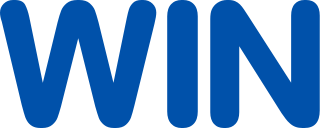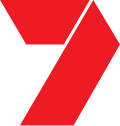
Western Australia is a state of Australia occupying the western 33 percent of the land area of Australia, excluding external territories. It is bounded by the Indian Ocean to the north and west, the Southern Ocean to the south, the Northern Territory to the north-east, and South Australia to the south-east. Western Australia is Australia's largest state, with a total land area of 2,527,013 square kilometres (975,685 sq mi). It is the second-largest country subdivision in the world, surpassed only by Russia's Sakha Republic. As of 2021, the state has 2.76 million inhabitants—11 percent of the national total. The vast majority live in the south-west corner; 79 percent of the population lives in the Perth area, leaving the remainder of the state sparsely populated.
Bunbury is a coastal city in the Australian state of Western Australia, approximately 175 kilometres (109 mi) south of the state capital, Perth. It is the state's third most populous city after Perth and Mandurah, with a population of approximately 75,000.

Television broadcasting in Australia began officially on 16 September 1956, with the opening of TCN-9, quickly followed by national and commercial stations in Sydney and Melbourne, all these being in 625-line black and white. The commencement date was designed so as to provide coverage of the Olympic Games in Melbourne. It has now grown to be a nationwide system that includes a broad range of public, commercial, community, subscription, narrowcast, and amateur stations.

The Seven Network is a major Australian commercial free-to-air television network. It is owned by Seven West Media Limited, and is one of five main free-to-air television networks in Australia. The network's headquarters are located in Sydney.

WIN Television is an Australian television network owned by WIN Corporation that is based in Wollongong, New South Wales. WIN commenced transmissions on 18 March 1962 as a single television station covering the Wollongong region. The WIN Network has since grown to cover much of regional Australia. The network's name, WIN, originates from its first station, Wollongong's WIN-4. WIN has a program supply agreement with metropolitan broadcaster Nine Network, covering its stations in Regional Queensland, Southern and Western New South Wales, Griffith, Regional Victoria, Mildura, Tasmania, Eastern South Australia, and Regional Western Australia. WIN also has a program supply agreement with third-placed metropolitan broadcaster Network 10, for its Northern New South Wales station. WIN also produces and broadcasts weeknight half-hour local news bulletins across its Queensland, southern New South Wales, Victoria and Tasmania markets, as WIN News.
Prime7, formerly Prime Television and other names, was an Australian television network. Prime Television launched on 17 March 1962 as CBN-8 in Orange, and later expanded to cover regional New South Wales, Victoria and the Australian Capital Territory. It was initially an independent affiliate owned by Prime Media Group before the network, and its sister GWN7, were acquired by Seven West Media on 31 December 2021.
STW is an Australian television station owned by the Nine Network that is based in Perth, Western Australia. STW broadcasts from a shared facility transmitter mast located in Carmel. The station callsign, STW, is an acronym of Swan Television, Western Australia.

TVW is a television station broadcasting in Perth, Western Australia, wholly owned by Seven West Media. It was the first television station in Western Australia, commencing broadcasting on 16 October 1959. It broadcasts a modulated 64-QAM signal of five DVB channels. The primary channel was available as a PAL-B modulated simulcast on VHF channel 7 at 182.25 MHz before being discontinued in the first half of 2013; it had been the station's primary signal since its inception. The TVW callsign stands for TV (Television) Western Australia.

Television in Australia began experimentally as early as 1929 in Melbourne with radio stations 3DB and 3UZ, and 2UE in Sydney, using the Radiovision system by Gilbert Miles and Donald McDonald, and later from other locations, such as Brisbane in 1934.
GWN7 was an Australian television network serving all of Western Australia outside metropolitan Perth. It launched on 10 March 1967 as BTW-3 in Bunbury. It was an affiliate of the Seven Network and served one of the largest geographic television markets in the world—almost one-third of the continent. The network's name, GWN, is an acronym of Golden West Network, the network's name from 1979 to when the current name was adopted in 2011.
In Australia, regional television is the local television services outside of the five main Australian cities.
NEW is a television station broadcasting in Perth, Western Australia, and is a member of Network 10. Out of the three commercial stations, NEW generally rates the lowest overall, but usually rates highest in its target demographic.
WOW is an Australian television station licensed to WIN Television, serving regional and remote Western Australia. The station officially commenced transmissions on 26 March 1999 as the second commercial regional broadcaster in Western Australia, alongside former monopoly, Golden West Network.

This timeline of Australian television lists important station launches, programs, major television events, and technological advancements that have significantly changed the forms of broadcasting available to viewers of television in Australia. The history of television in Australia can be traced back to an announcement from the Menzies' government concerning plans for television services in Sydney and Melbourne.

9HD is an Australian television channel owned by Nine Entertainment, originally launched on 17 March 2008 featuring unique "breakaway" programming until 2009 and a high-definition simulcast of the Nine Network from 2009 to 2010 and again since 26 November 2015. The channel is available on high definition digital television viewers in metropolitan and regional areas through a number of owned-and-operated and affiliate stations. Originally 9HD only simulcast blocks of programming from the Nine Network, and in 2008 it added time-shifted news, movies, drama and entertainment programs. Following the launch of 9Go! in August 2009, 9HD reverted to a HD simulcast of the Nine Network. The channel was replaced completely in 2010 and the space occupied by the newly launched multichannel 9Gem. Following the government's decision to remove the SD Primary Channel limitations, the channel returned as a HD simulcast on channel 90 on 26 November 2015.
The Viewer Access Satellite Television service, or VAST, is a satellite television platform in Australia, providing digital television and radio services to remote and rural areas, as well as viewers in terrestrial black spots. The service using the Optus C1 and Optus D3 satellites. It is partly funded by the Australian Government and managed through a joint-venture between Southern Cross Media and Imparja Television. It is an even more restricted free-to-view replacement for Optus Aurora providing channels which have been absent on the remote service until now. The platform uses only H.264 video encoding and 8PSK, which allows for more lower bit rate channels on the limited transponder space that's available. The EPG uses an MHEG-5 guide instead of the usual more compatible DVB EIT.

Gold is an Australian advertorial datacasting channel that launched on 1 May 2012 by the WIN Corporation. It is available to homes in most regional WIN Television viewing areas on LCN 85. The channel broadcasts mostly infomercials, as well as education, lifestyle, community programming as well as television classics from the Crawfords library.
9Life is an Australian free-to-air digital television multichannel owned by Nine Entertainment. The channel airs mostly foreign lifestyle and reality programs, with the channel having a licensing agreement with Discovery Inc. for the distribution of many formats.
The 2016 Australian regional television realignment occurred on 1 July 2016, when a major series of affiliation changes occurred in Australian regional television; WIN Television, a chain of regional stations that had historically been affiliated with Nine Network, switched its affiliation to Network Ten. At the same time, Southern Cross Ten stations outside of Northern New South Wales switched to Nine Network. Several Network Ten-affiliated digital television stations co-owned by WIN also switched to Nine, by virtue of WIN's primary stations taking on the Ten affiliation.








